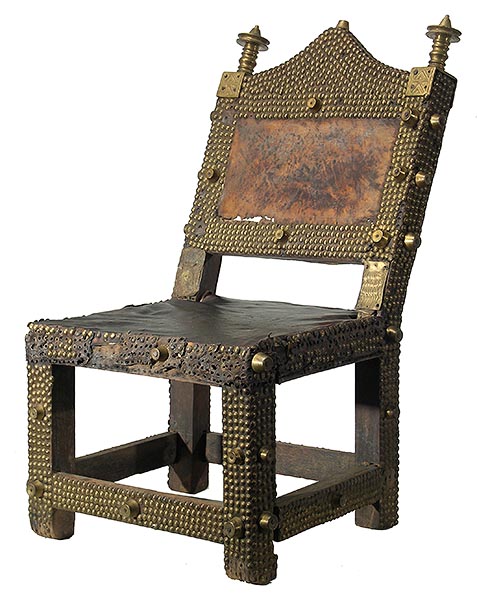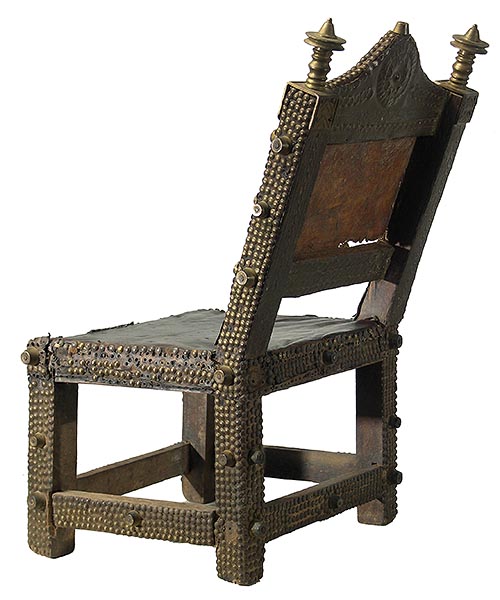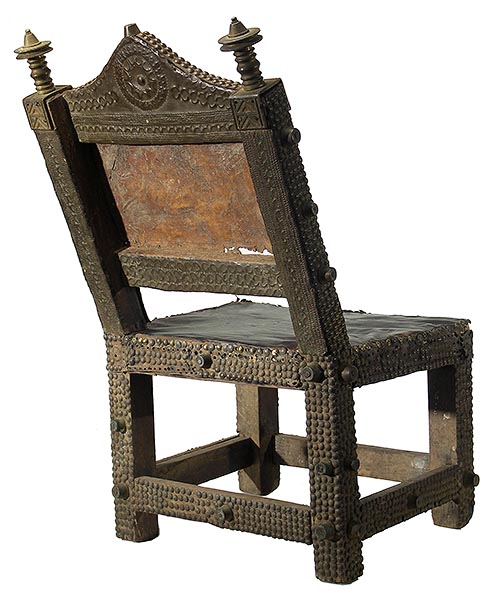







ASANTE
ASIPIM CHAIR 2
28
" high x 17" wide x 20.5" deep
$1500
SOLD
This chair has been vetted as authentic, dating from the 19th or early 20th Century.
This example is in good condition, but many of the upolstery tacks on the front and left side of the seat are lost and, although stable, there is a tear in the leather back.
Asipim chairs are often seen in Asante royal courts leaning against walls when not in use. Constructed simply out of wood with a hide seat they are patterned after 17th or 18th century English chairs known as "farthingale", "upholsterer's chair", or "embroiderers' chair". Through time they have become identified with Asante chieftaincy becoming symbols of social status and rank in which even minor chiefs will have a number of asipim chairs and more prominent chiefs will have many more. Reflecting Asante expectations of their rulers to be firm and authoritative, the chair takes its name, asipim "I stand firm". Asipim chairs will be decorated with brass tacks and caps, turned finials, worked brass sheets which are incised, worked in repousse' or stamped. The turned brass finials called ntuatire attached to the tops of the chairs represent abstracted claws of an eagle. These finials were made in Europe and traded in the region.
This remarkably decorated Asipim chair is completely covered with tacks or brass sheet. The leather on the seat appears to have been recovered while the back appears to be the original hide now dry and taut through time. Designs worked into the brass sheet coverings are similar to motifs found on cast brass containers (kuduo), sheet metal canisters (forowa) or stamped on cloths (adinkra). The circular motif with the dot in the center worked in repousse in the peak at the back of the asipim chair is based upon a variant of the symbol known as "Adinkrahene", a design taken from the King of Adinkra after his defeat by the Asante in 1812. Semi-circular forms worked in rows along the vertical and horizontal supports of the chair are similar to early bronze currency forms known as manillas used by Europeans to conduct trade along the west coast of Africa. If indeed those designs represent manillas then this stool could date to the 18th or early 19th century. The turned brass finials at each corner of the back rest on decorated brass plates.
Dr. Daniel Mato
Professor Emeritus of Art History
The University of Calgary
Calgary, Alberta, Canada
TRIBE |
OBJECT |